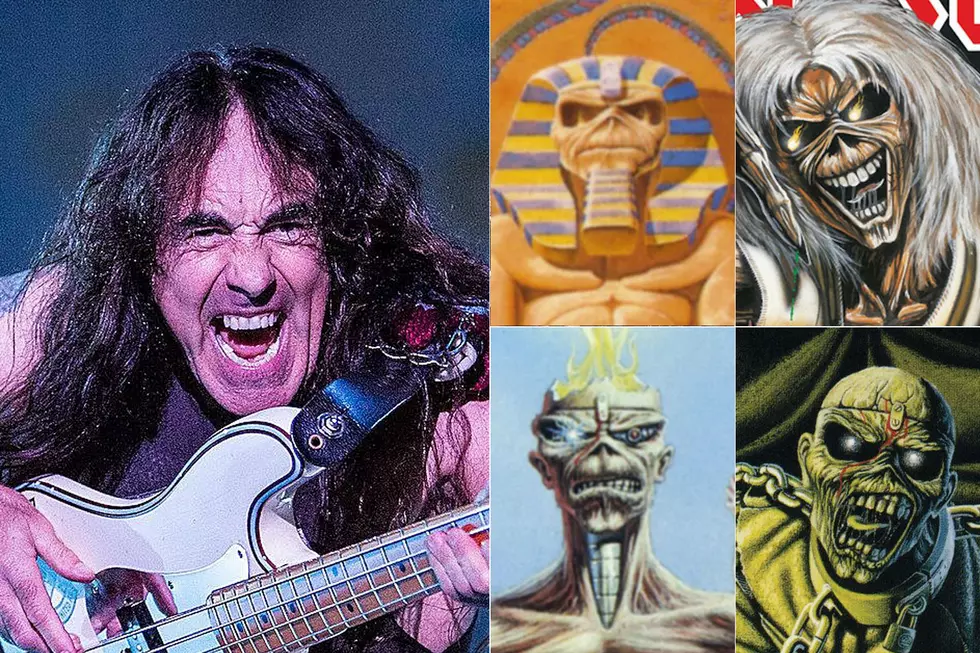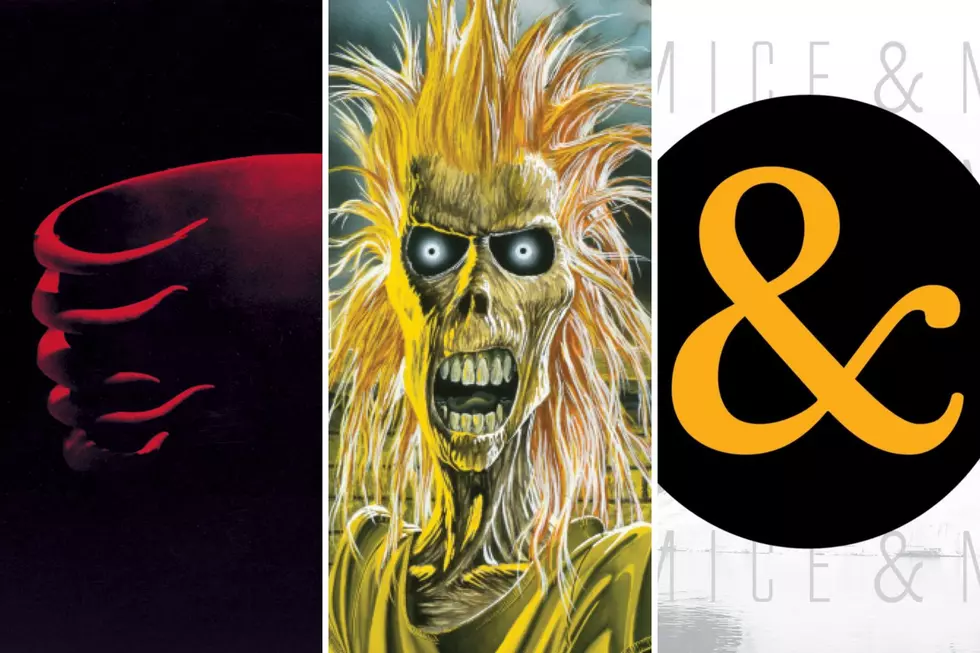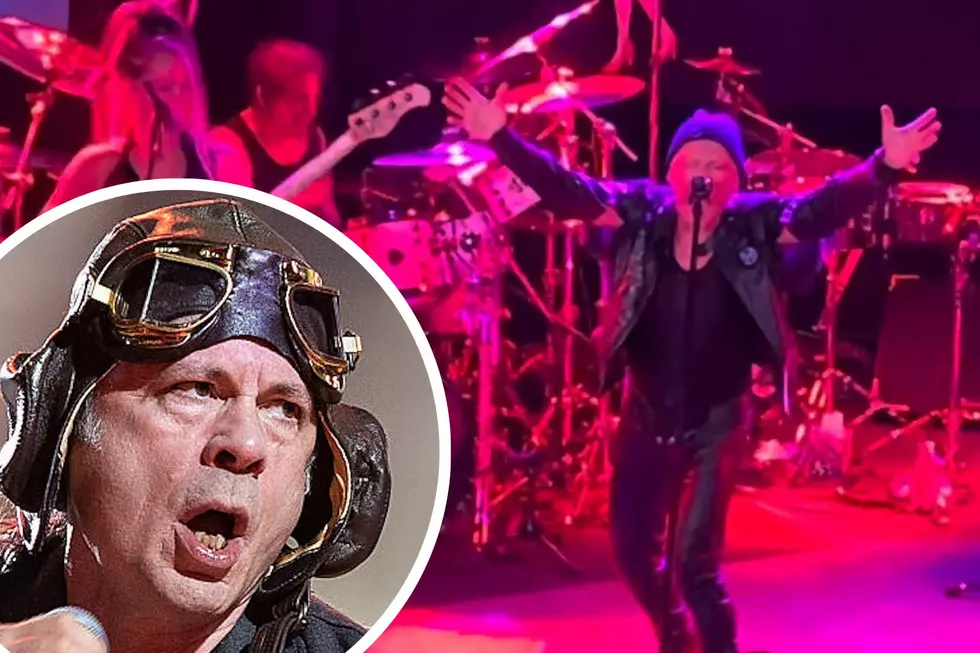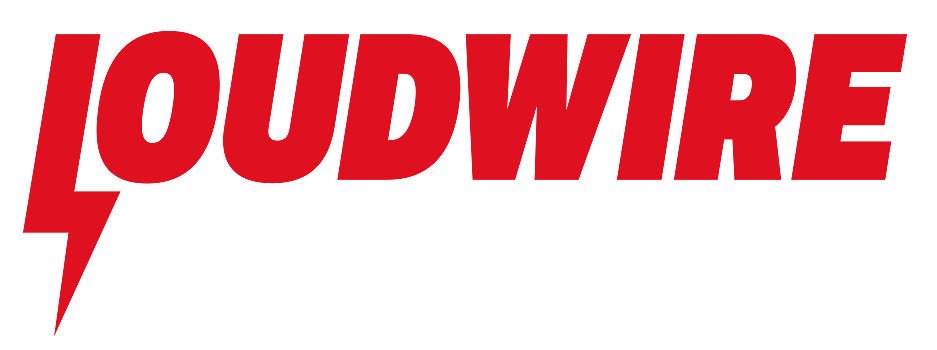
Cover Stories: Iron Maiden’s Self-Titled Debut Album
Iron Maiden were no overnight success. Bassist Steve Harris formed the band on Christmas Day 1975, and Maiden's debut album didn't hit the streets until April 14, 1980. A lot happened during those four-plus years, including the band undergoing several lineup changes while working on both their songs and their stagecraft.
Punk rock happened, too. London 1976 was the place to be: The energy, the style, and the do it yourself (DIY) ethos permeated the city's arts culture. It was an exciting but impoverished city at that moment in history.
It wasn't just London, either. About an hour outside of the city in the coastal town of Portsmouth, 18-year-old Derek Riggs was living the DIY movement, teaching himself how to paint after being kicked out of art school. Eventually he'd pack up his paints and brushes and move to the bustling city. Riggs described the era for Metal Sucks back in 2010:
There were millions unemployed; that’s quite a lot for a country like England. Parts of London were completely rundown....I lived in Finsbury Park — now it’s trendy — and buildings were literally falling down. They were full of squatters. And that was my neighborhood. And this is where English punk rock came from. This is from a bunch of kids who were told that they were nothing, never going to be any good, never be anything.
While Riggs ventured into the world of commercial art, Maiden were upping their game with stage lights and a little pyro. The piece de resistance? A paper-mache mask made by a friend of their lighting guy. The band named the mask Eddie, as with their thick London accents "Ed" and "Head" sounded alike. During shows, when the band played the eponymous "Iron Maiden" the lighting guy would squirt blood from Eddie's mouth with the aid of an aquarium pump.
Eventually the band moved up to a larger, fiberglass Eddie head complete with smoke and lights, but let's get back to our man Riggs for a moment. The young artist was having some success designing jazz and disco album covers for EMI Records, but his heart was in science fiction art. Back in 2010, the artist recalled for Cable Radio Milton Keynes:
Two years before I ever met [Iron Maiden], and before they had a recording contract...I was sitting alone in my shed trying to get my painting together. I was doing a lot of work on symbolism, reading a lot of books, trying to work out what it was all about...reading a lot of horror books too....
There was an idea that H.P. Lovecraft came up with that you can make things more horrible by putting them up in your own environment rather than sticking it out in Transylvania or somewhere. It was in the late '70s and punk was big. There was this 'wasted youth' concept going around...so I designed this character with punky hair, and I thought I'll put a corpse in a T-shirt, because I had a picture from the 1960s of this dead American's head stuck on a Vietnamese tank. That's what they said it was but it may not be true. Anyway, I painted this head with punk hair and stuck it up where I used to live.
I used to walk a lot at night, and I came upon this wall which was all yellow because it had street lights above it, and the moon was out too... which was kind of blueish looking. It was quite a stunning contrast, so I used it.
Riggs named the finished painting "Electric Matthew Says Hello." He passed the artwork onto his agent who "kept it for a few weeks, then gave it back to me and said, 'Look we don't think this is very commercial,'" the artist says in Martin Popoff's Fade to Black. He stuck the painting in his portfolio and there it lingered, waiting for the right client.
Maiden's big break came in December 1979. Four years after Smith formed the band, Iron Maiden signed to EMI on the strength of the now legendary Soundhouse Tapes EP. They entered the studio on January 1980, and two weeks later their first full length record was done. Now all they needed was an album cover.
This is where Riggs' punk-rock peanut butter collides with Maiden's heavy metal chocolate and delicious history is made. Band manager Ron Smallwood saw some of the artist's work for other EMI clients and asked to see his portfolio. Back to the Cable Radio Milton Keynes interview:
Heavy metal had been the most unpopular form of entertainment in the universe for about five years and it was just starting to make a comeback. [Smallwood] had this band and he knew he wanted illustrated covers. I went down to Wessex Recording Studios where they were making lots of noise and they were all there.
I had put lots of things in [my portfolio] and Steve Harris said 'well I don't want pictures of metal women'....I had this weird comic book science fiction stuff in there....Anyway, they liked ["Electric Matthew Says Hello"], and they said, 'give it some more hair and we'll have that.'
So Electric Matthew grew a mullet and Eddie the Head got a body, and the most enduring image in heavy metal was born.
Since then, Eddie has [dis]graced the cover of dozens of Iron Maiden albums and singles along with countless t-shirts, posters and other merchandise. He's even popped up in a couple of video games.
Over the next dozen years Riggs created all of Maiden's sleeves, incorporating not only Eddie but the street lamps from the cover of that debut album. He parted ways with the band beginning with 1992's Fear of the Dark, though the artist has done some work for Maiden since then, including 2000's Brave New World.
Riggs even painted the sleeve for Iron Maiden lead singer Bruce Dickinson's 1997 solo album, Accident of Birth. The name of the sleeve's nasty little character? Edison -- Eddie's son.
The legend continues....
You Think You Know Iron Maiden?
100 Metal Facts You May Not Know
More From Loudwire









